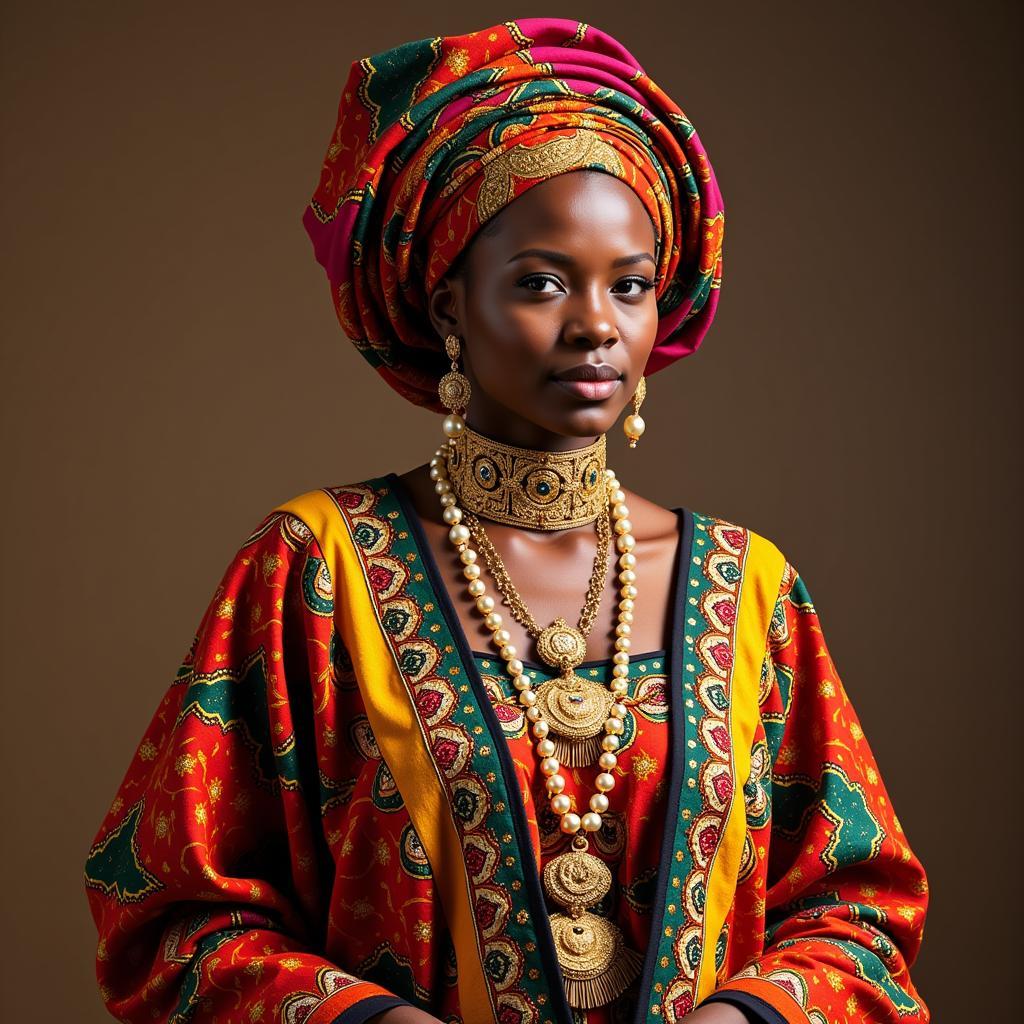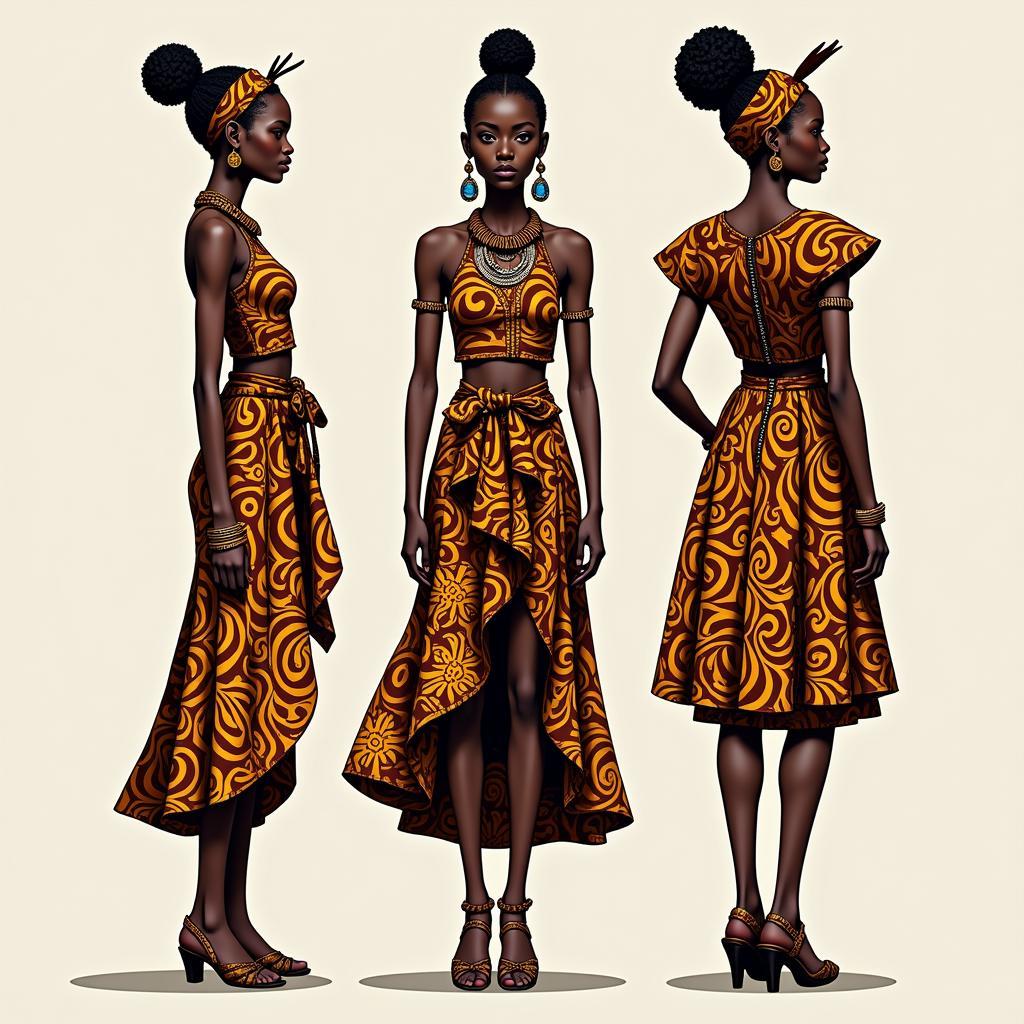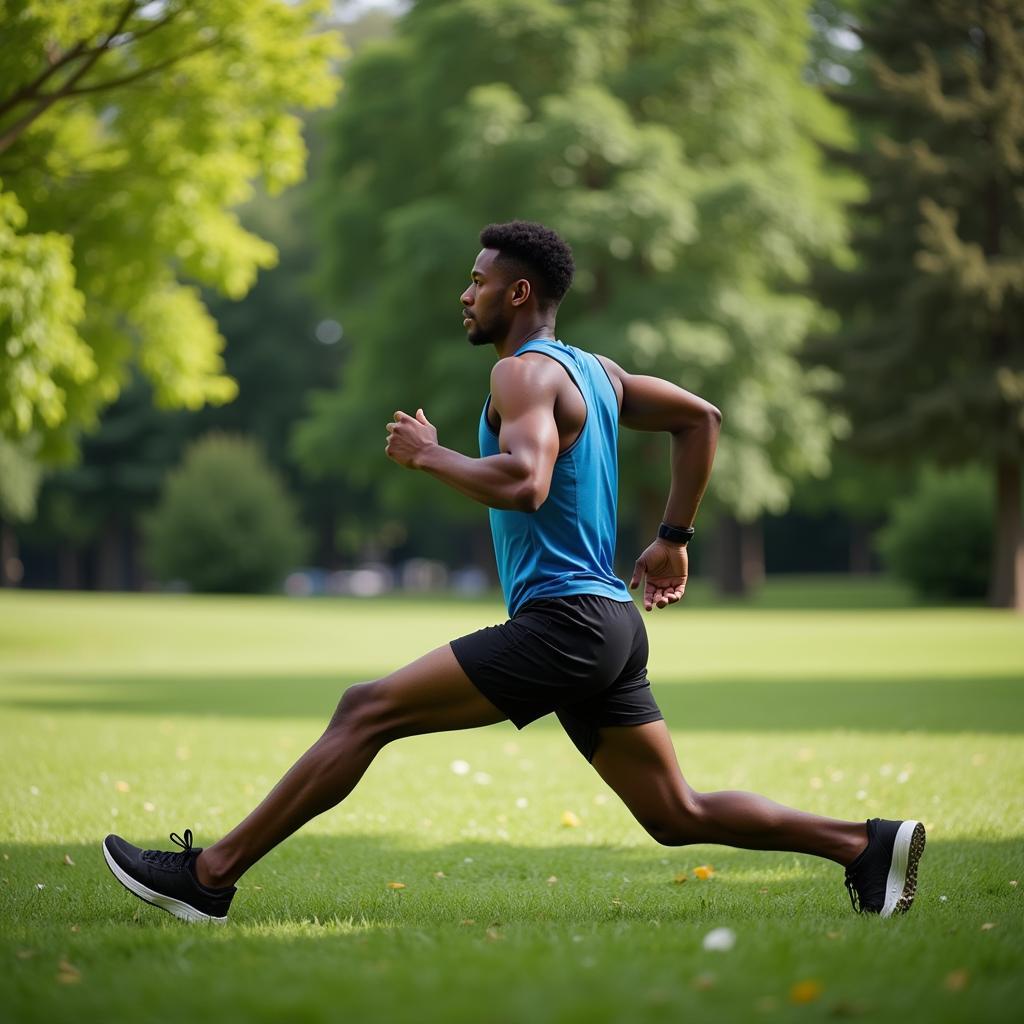Exploring the Vibrant World of African Tribal Costume
African Tribal Costume is much more than just clothing; it’s a powerful expression of identity, history, and cultural beliefs. From the intricate beadwork of the Maasai to the vibrant textiles of the Yoruba, each tribe’s attire tells a unique story. These costumes are not merely garments; they are living embodiments of tradition, spirituality, and artistry, passed down through generations. Let’s delve into this fascinating world and uncover the rich tapestry of meaning woven into every thread and bead. You can discover more about different African tribes and their customs on our website.
The Significance of African Tribal Costume
African tribal costumes play a vital role in various aspects of community life. They are used to mark important occasions like births, marriages, and funerals, and they often signify social status, age group, and marital status. The materials used, the colors, and the patterns all hold symbolic meaning, reflecting the tribe’s connection to their ancestors, their environment, and their spiritual beliefs. Imagine a young Maasai warrior adorned with elaborate beadwork, each color and pattern representing a specific aspect of his journey to manhood. Or picture a Yoruba woman draped in vibrant Aso Oke cloth, the intricate patterns telling tales of her family’s lineage and history.
Materials and Craftsmanship
The creation of African tribal costume is often a meticulous process involving skilled artisans. Natural materials like leather, animal hide, raffia, and various plant fibers are commonly used. African clothing history demonstrates the incredible ingenuity and artistry of these craftspeople. Elaborate beadwork, intricate embroidery, and vibrant dyeing techniques further enhance the costumes, transforming them into wearable works of art.
Regional Variations in African Tribal Attire
The vastness of the African continent results in a stunning diversity of tribal costumes. Each region boasts its unique style, reflecting the specific cultural influences and environmental conditions. From the Sahara Desert to the lush rainforests, the attire adapts to the climate and resources available. In North Africa, flowing robes and head coverings offer protection from the sun, while in West Africa, brightly colored textiles and elaborate headdresses are common. Understanding these regional variations offers a deeper appreciation for the rich tapestry of African culture.
How to Appreciate African Tribal Costume Respectfully
It’s crucial to approach African tribal costume with respect and understanding. These garments are not simply fashion statements; they are deeply meaningful expressions of cultural identity. Avoid reducing them to mere “costumes” for Halloween or fancy dress parties. Instead, take the time to learn about the history, symbolism, and significance behind each piece. About African tribes costumes provides valuable insights into the cultural context and significance of these garments.
 West African Ceremonial Costume
West African Ceremonial Costume
The Impact of Modernization on Traditional Attire
While traditional African tribal costume remains an important part of many communities, modernization and globalization have inevitably influenced its evolution. Western clothing styles have become increasingly common, particularly in urban areas. However, many tribes are actively working to preserve their cultural heritage, adapting traditional designs for contemporary contexts. This fusion of old and new creates a dynamic and evolving landscape of African fashion.
“Preserving our cultural heritage through our attire is vital,” says Dr. Abena Oduro, a renowned anthropologist specializing in African textiles. “It’s a way of connecting with our ancestors and ensuring that our stories continue to be told.”
 Contemporary African Fashion Inspired by Tribal Costume
Contemporary African Fashion Inspired by Tribal Costume
African Tribal Costume: A Legacy of Beauty and Meaning
African tribal costume offers a captivating glimpse into the diverse cultures and traditions of the continent. It’s a testament to the creativity, artistry, and resilience of its people. By learning about these intricate garments, we can gain a deeper appreciation for the rich tapestry of African history and heritage. For inspiration, take a look at these stunning African hair styles for ladies. They are often complemented by traditional accessories and clothing. Remember, each bead, each color, each pattern tells a story. And these stories deserve to be heard. Learn more about unique African beads UK.
In conclusion, African tribal costume is a powerful expression of identity and cultural heritage. It’s not just clothing; it’s a living testament to the history, artistry, and resilience of African communities. By understanding and appreciating these unique garments, we can gain a deeper appreciation for the diverse cultures that make up this vibrant continent.
FAQ:
- What are the most common materials used in African tribal costumes?
- How do different tribes use costumes to communicate social status?
- What is the significance of beadwork in African tribal attire?
- How is modernization impacting traditional African clothing?
- Where can I learn more about specific African tribal costumes?
- Are there any ethical considerations when purchasing or wearing African tribal inspired clothing?
- How can I support the preservation of African cultural heritage through fashion?
For further support, please contact us: Phone: +255768904061, Email: kaka.mag@gmail.com Or visit us at: Mbarali DC Mawindi, Kangaga, Tanzania. We have a 24/7 customer service team.

